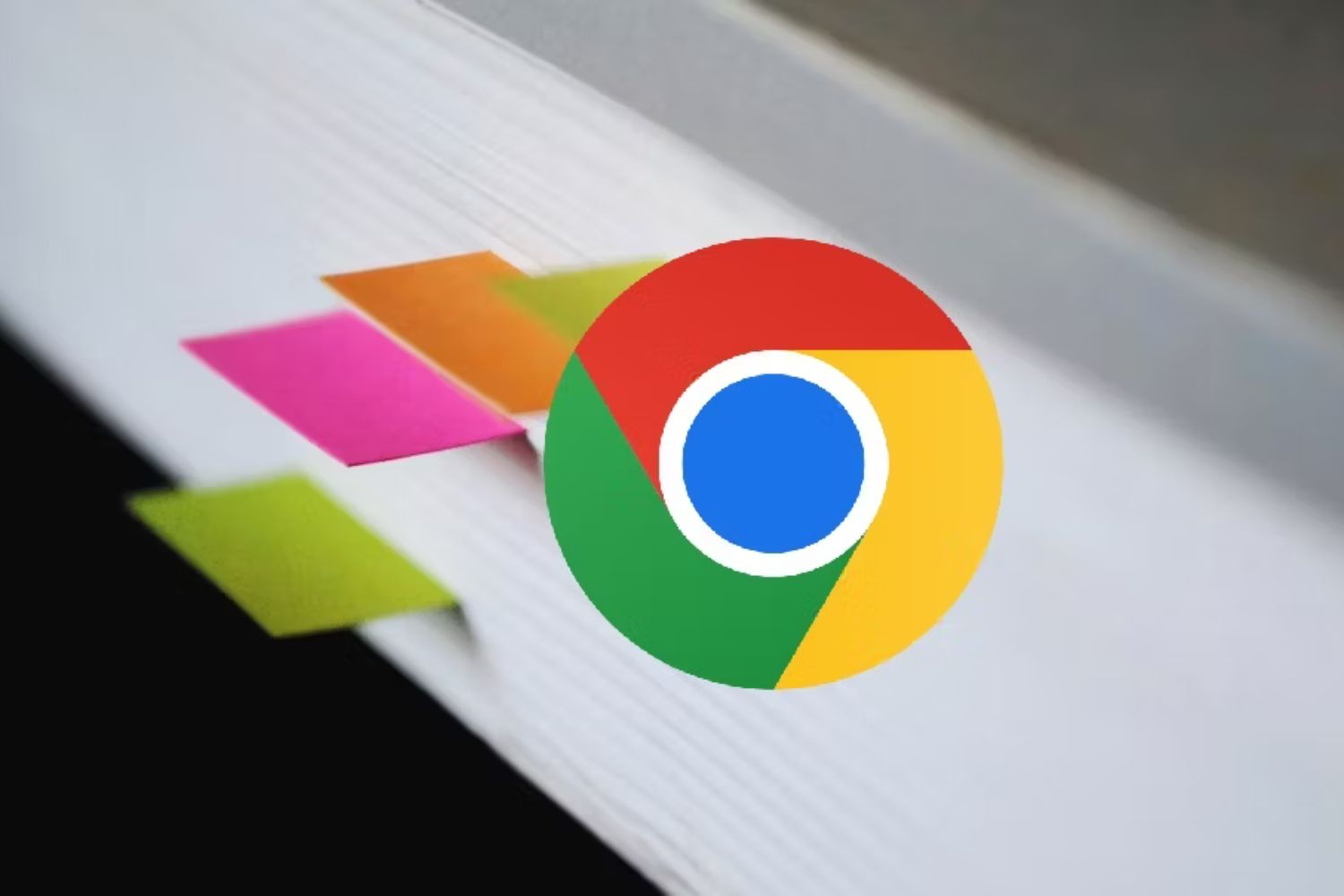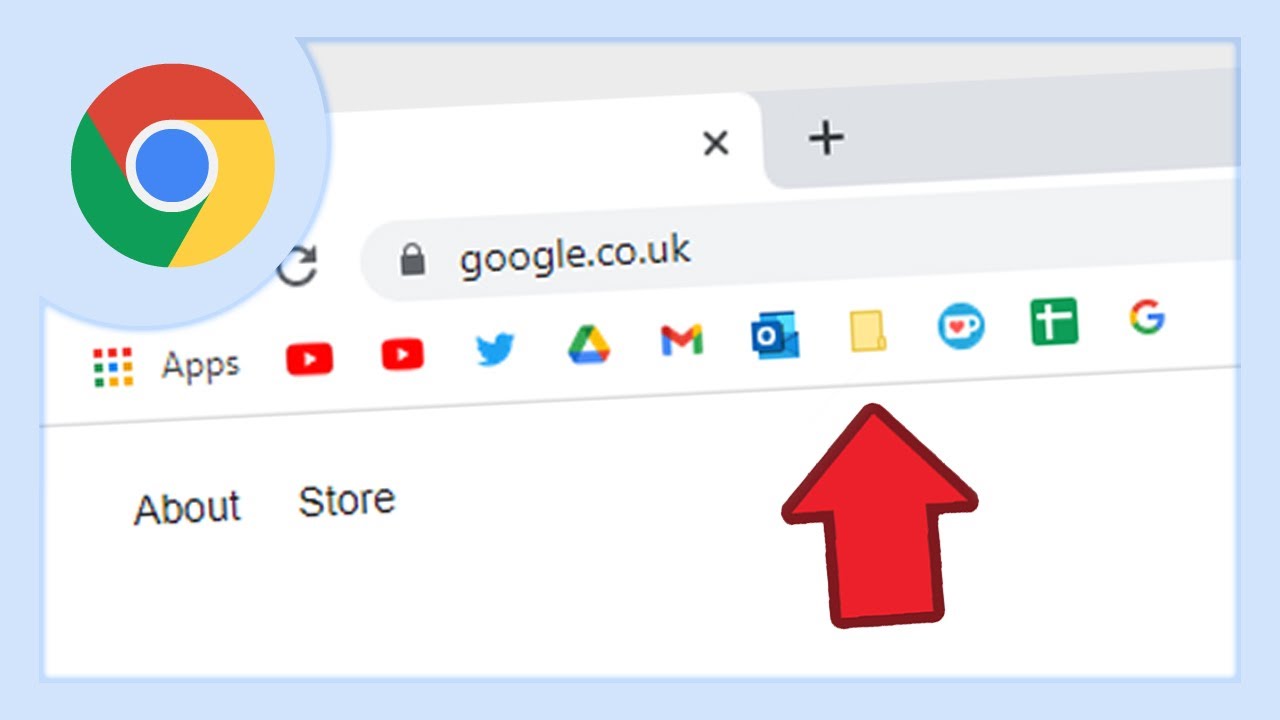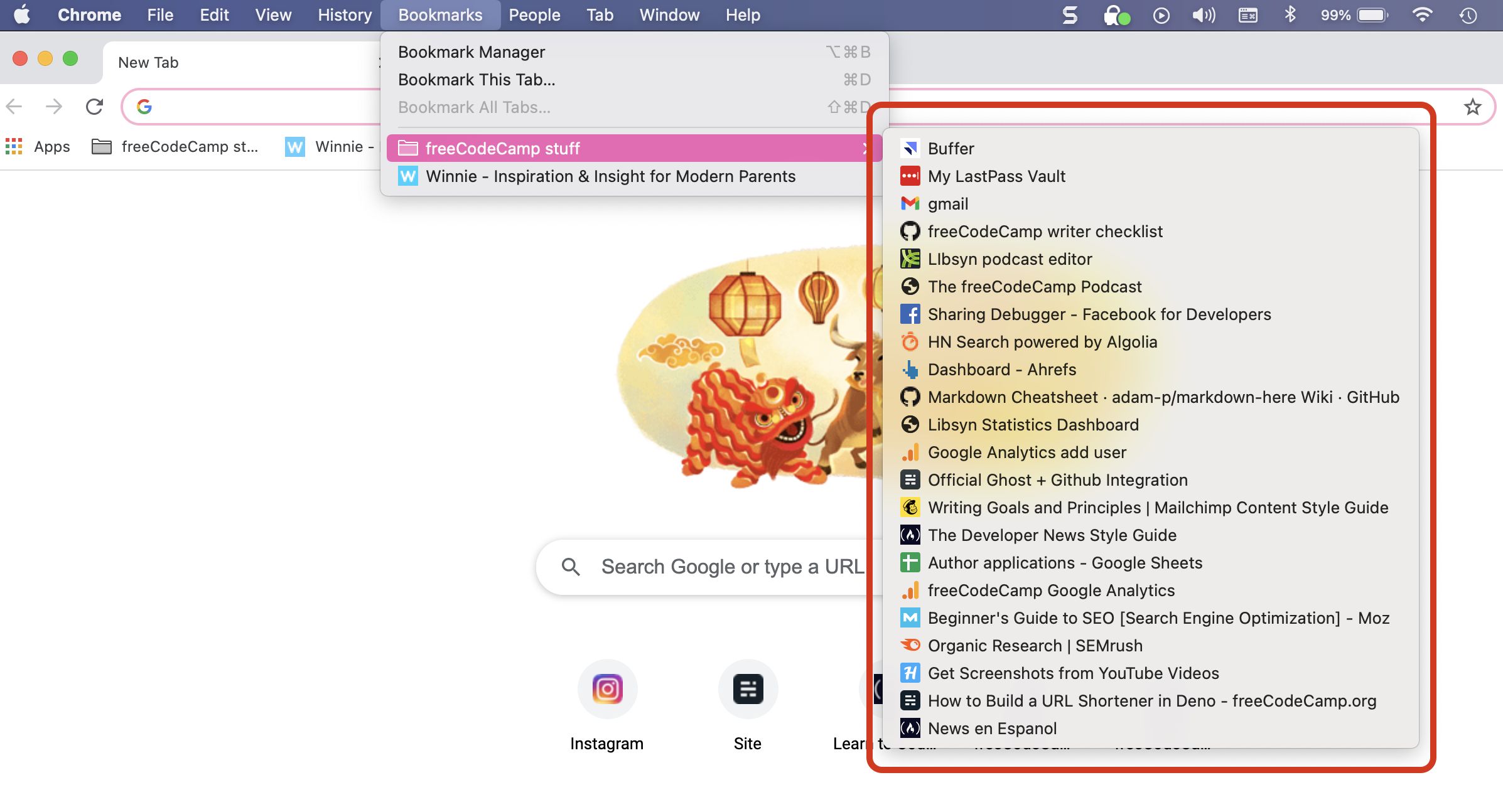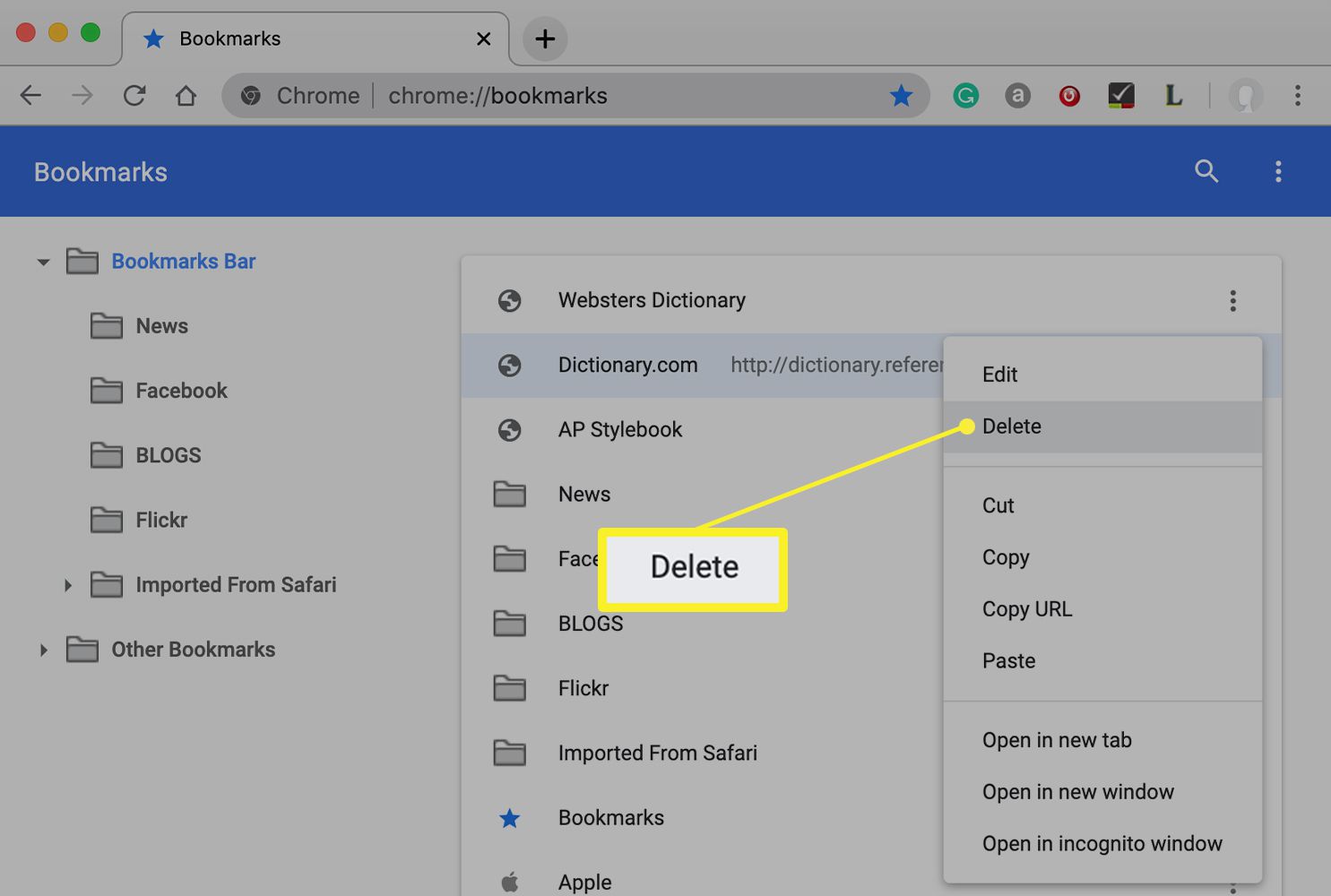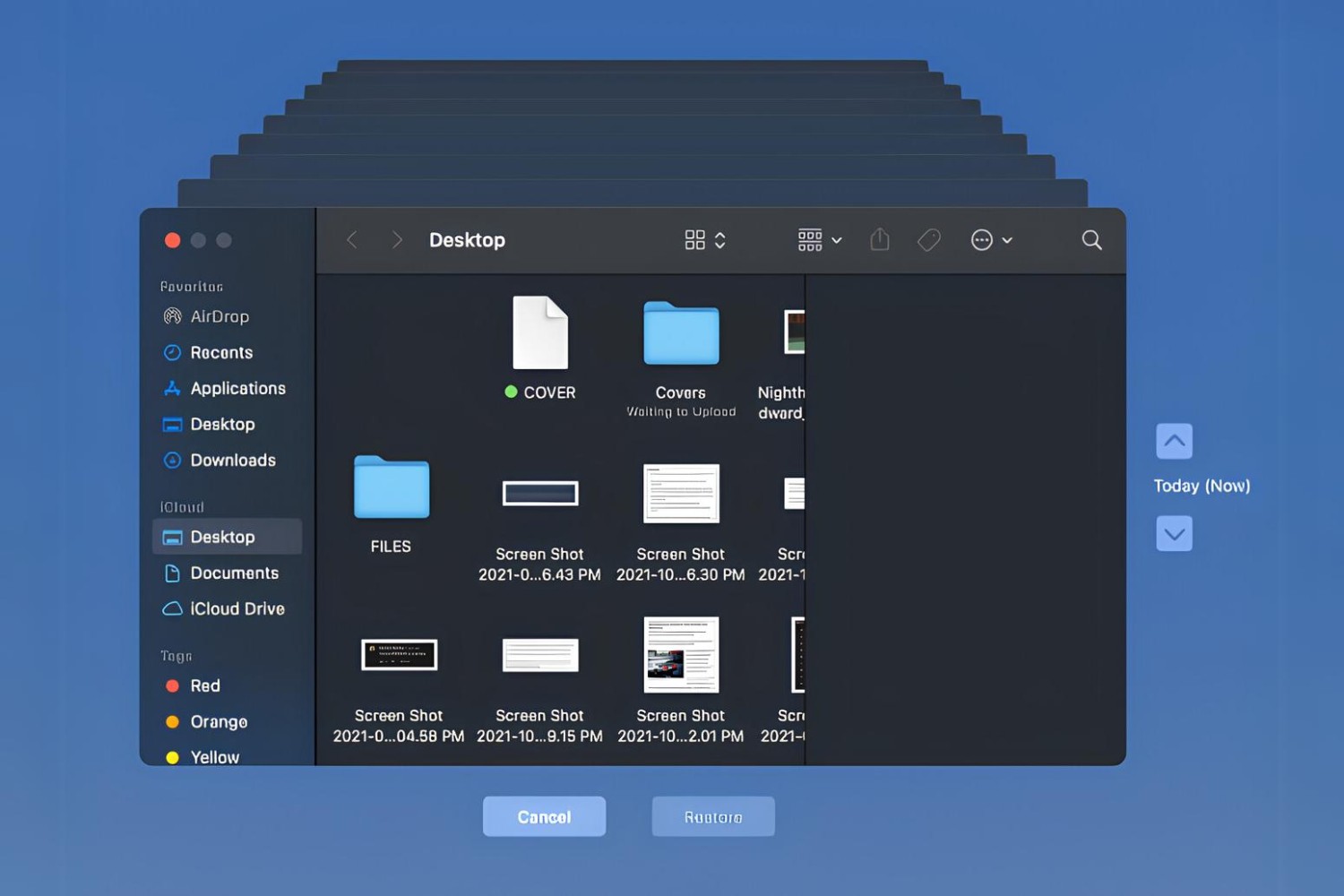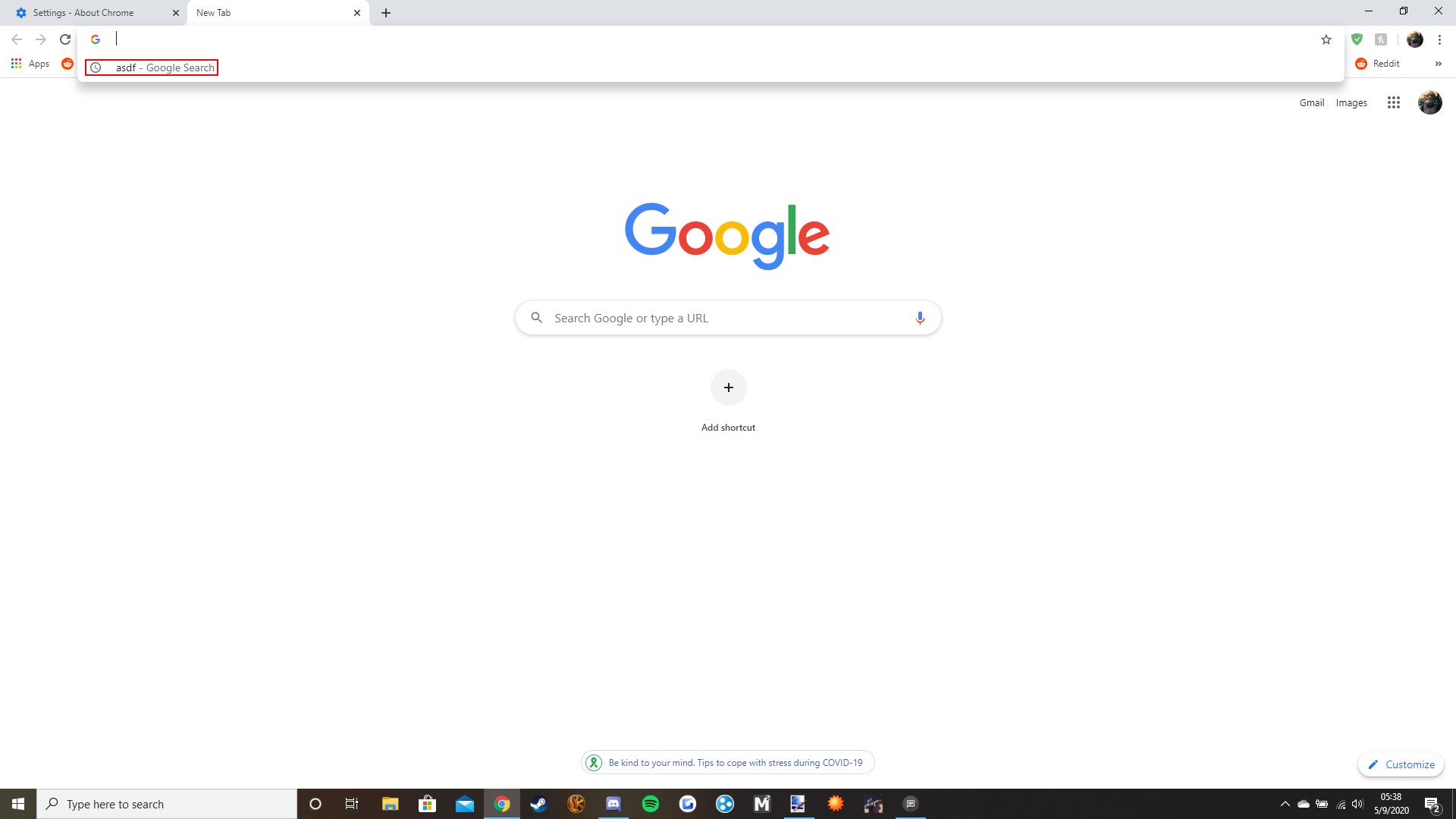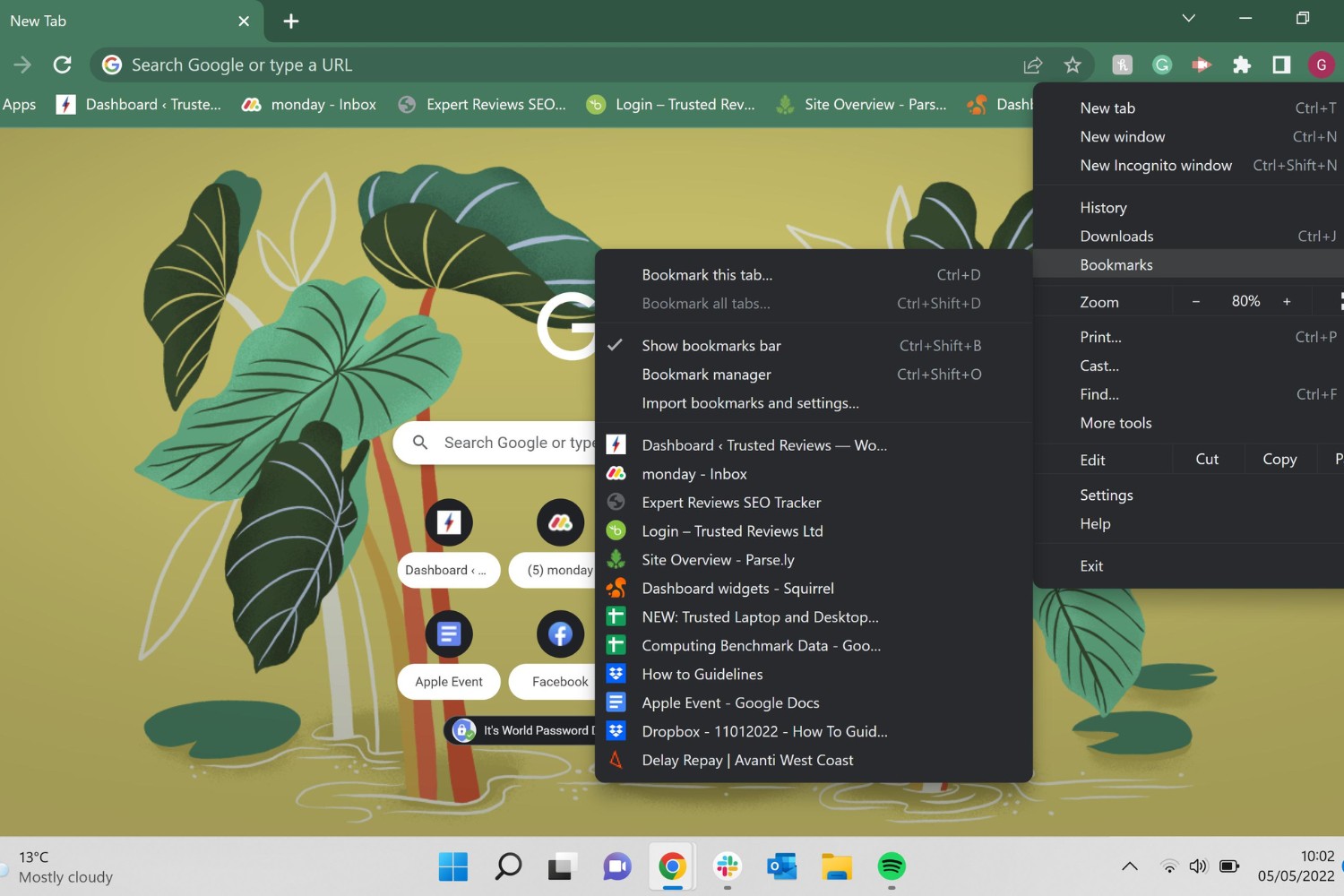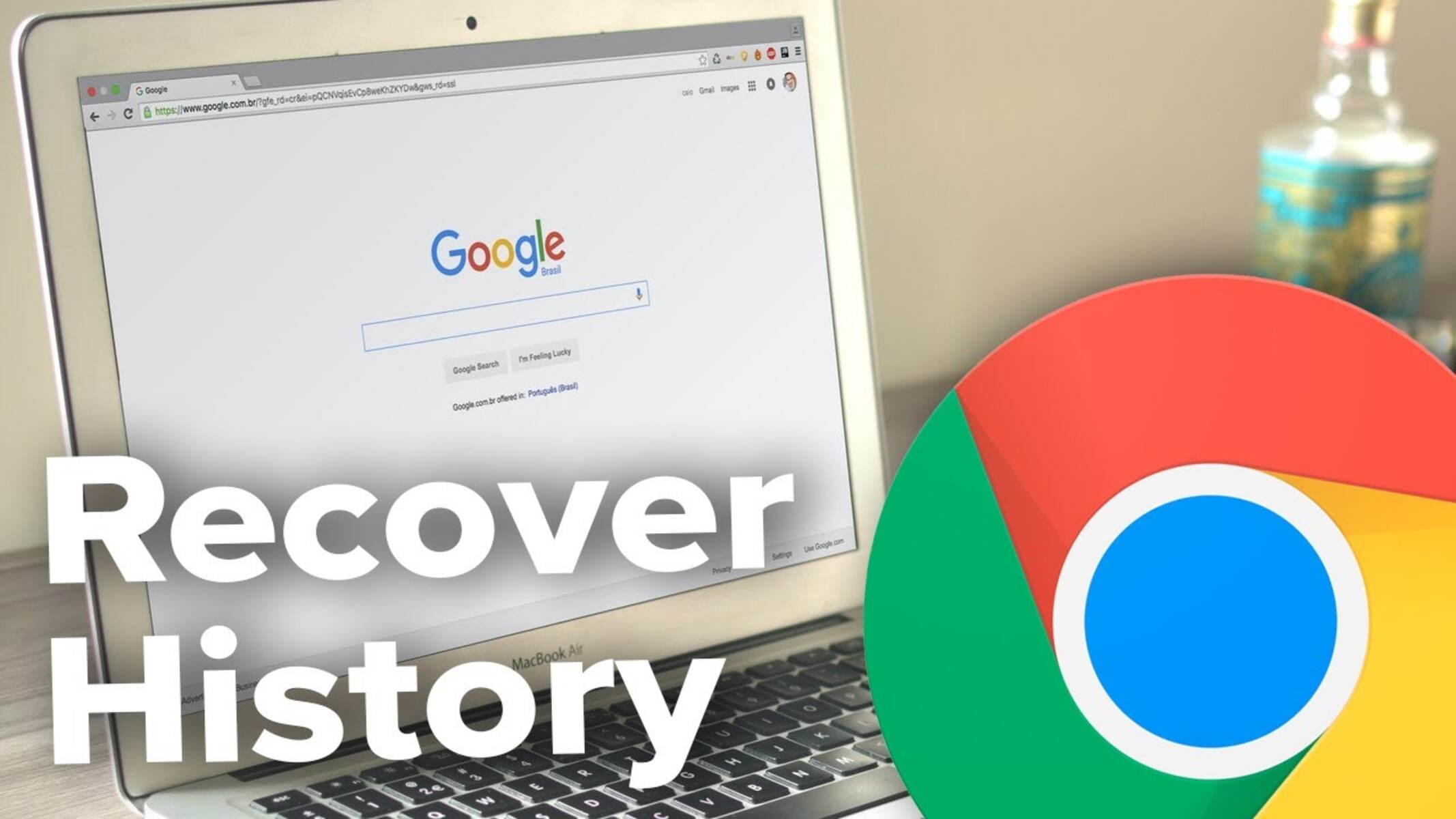Introduction
Losing access to your carefully curated collection of bookmarks in Google Chrome can be a disheartening experience. Whether it's due to accidental deletion, a browser update gone awry, or a computer malfunction, the thought of losing valuable bookmarks can be distressing. However, there's no need to panic. Google Chrome provides several methods to recover lost bookmarks, ensuring that your browsing history and saved links are not lost forever.
In this comprehensive guide, we will explore various strategies to recover Google Chrome bookmarks, ranging from accessing the Bookmarks Manager to utilizing Google Account sync and third-party tools. By following these step-by-step instructions, you can regain access to your cherished bookmarks and resume your browsing activities with ease.
So, if you've found yourself in the unfortunate situation of missing bookmarks in Google Chrome, fret not. With the right approach and a bit of technical know-how, you can restore your bookmarks and continue enjoying a seamless browsing experience. Let's delve into the methods to recover your lost bookmarks and ensure that your browsing journey remains uninterrupted.
Step 1: Accessing the Bookmarks Manager
Accessing the Bookmarks Manager in Google Chrome is the initial step towards recovering lost bookmarks. The Bookmarks Manager serves as a centralized hub where all your bookmarks are stored, organized, and can be restored if accidentally deleted. Here's how to access the Bookmarks Manager:
-
Using the Menu Bar:
- Open Google Chrome on your computer.
- Click on the three-dot menu icon located in the top-right corner of the browser window.
- From the dropdown menu, hover over "Bookmarks" to reveal additional options.
- Select "Bookmark Manager" from the expanded list. This action will open a new tab displaying the Bookmarks Manager interface.
-
Using the Keyboard Shortcut:
- Launch Google Chrome on your computer.
- Press "Ctrl + Shift + O" on Windows/Linux or "Command + Option + B" on Mac. This keyboard shortcut directly opens the Bookmarks Manager, allowing quick access to your saved bookmarks.
-
Using the Address Bar:
- Open Google Chrome on your computer.
- Type "chrome://bookmarks/" in the address bar and press "Enter." This URL directly navigates you to the Bookmarks Manager, providing immediate access to your bookmarked sites.
Upon accessing the Bookmarks Manager, you will be presented with a comprehensive view of your bookmarks, organized into folders and subfolders. From here, you can browse through your saved bookmarks, restore any accidentally deleted items, and reorganize your bookmarked links as needed.
By familiarizing yourself with the process of accessing the Bookmarks Manager, you are better equipped to navigate through your saved bookmarks and initiate the recovery process. This foundational step sets the stage for the subsequent actions to restore lost bookmarks, ensuring that your browsing experience remains uninterrupted and your valuable links are safeguarded.
Step 2: Restoring Bookmarks from the Trash
When you accidentally delete a bookmark in Google Chrome, it doesn't vanish into the digital abyss immediately. Instead, it finds its way to the "Trash" or "Recently Deleted" folder within the Bookmarks Manager, where it awaits potential restoration. This safety net ensures that deleted bookmarks can be recovered without irreversible consequences. Here's how you can restore bookmarks from the Trash:
-
Accessing the Trash Folder:
- Open Google Chrome and navigate to the Bookmarks Manager using one of the methods outlined in Step 1.
- Look for the "Recently Deleted" or "Trash" option in the Bookmarks Manager's sidebar. Clicking on this option will display a list of bookmarks that have been recently deleted.
-
Restoring Individual Bookmarks:
- Within the Trash folder, you will see a list of bookmarks that have been deleted. Locate the specific bookmark you wish to restore.
- Right-click on the bookmark and select the "Restore" option from the context menu. This action will immediately return the bookmark to its original location within your bookmarks hierarchy.
-
Restoring Multiple Bookmarks:
- If you have inadvertently deleted multiple bookmarks and need to restore them in one go, you can utilize the multi-select feature.
- Hold down the "Ctrl" key on Windows/Linux or the "Command" key on Mac while clicking on the individual bookmarks you want to restore. Once selected, right-click on any of the highlighted bookmarks and choose "Restore" to return them to their respective folders.
-
Verification and Organization:
- After restoring bookmarks from the Trash, it's advisable to verify that they have been successfully reinstated in their original locations.
- Take this opportunity to organize your bookmarks, ensuring that they are neatly categorized and easily accessible for future use.
By following these steps, you can effectively retrieve deleted bookmarks from the Trash folder, preventing the loss of valuable links and maintaining a well-organized collection of saved web pages. This straightforward process empowers you to rectify accidental deletions and ensures that your browsing experience remains seamless and uninterrupted.
Step 3: Using Google Account Sync
Google Chrome offers a robust synchronization feature that allows users to seamlessly back up and sync their browsing data, including bookmarks, across multiple devices. By leveraging Google Account Sync, you can effortlessly recover lost bookmarks and ensure that your browsing history remains consistent across various platforms. Here's how to utilize Google Account Sync to restore your valuable bookmarks:
-
Ensure Sync is Enabled:
Before proceeding with the bookmark recovery process, it's essential to verify that Google Account Sync is enabled in your Google Chrome browser. To do this, follow these steps:- Open Google Chrome on your computer.
- Click on the three-dot menu icon in the top-right corner and select "Settings" from the dropdown menu.
- In the Settings tab, navigate to the "Sync and Google services" section.
- Confirm that the "Sync" feature is turned on. If not, toggle the switch to enable synchronization for bookmarks and other browsing data.
-
Accessing Synced Bookmarks:
Once Google Account Sync is enabled, your bookmarks are automatically backed up to your Google Account. To access these synced bookmarks, follow these steps:- Open Google Chrome on any device where you are signed in with the same Google Account used for synchronization.
- Click on the three-dot menu icon and select "Bookmarks" from the dropdown menu.
- From the Bookmarks submenu, select "Bookmark manager" to view the synced bookmarks.
-
Restoring Bookmarks from Sync:
In the Bookmark Manager, you will find a comprehensive list of your synced bookmarks, organized in the same manner as on your primary device. To restore lost bookmarks from the synced data, simply locate the specific bookmark or folder you wish to recover and click on it to add it back to your local bookmarks. -
Syncing Across Devices:
Google Account Sync ensures that any changes made to your bookmarks, including additions, deletions, and reorganization, are reflected across all devices linked to your Google Account. This seamless synchronization mechanism guarantees that your bookmarks are consistently updated and readily accessible from any device where you are signed in with your Google Account.
By leveraging Google Account Sync, you can effortlessly recover lost bookmarks and maintain a harmonized browsing experience across your devices. This powerful synchronization feature not only safeguards your bookmarks but also streamlines your browsing activities, allowing you to seamlessly transition between devices without the fear of losing valuable links.
Step 4: Using a Third-Party Tool
In addition to the built-in features provided by Google Chrome for bookmark management and recovery, users can explore the option of using third-party tools to facilitate the restoration of lost bookmarks. These tools offer advanced functionalities and additional capabilities, providing an alternative approach to recovering and safeguarding valuable browsing data. Here's a detailed exploration of using a third-party tool to recover Google Chrome bookmarks.
Exploring Third-Party Bookmark Recovery Tools
-
Identifying Reliable Tools: When considering third-party tools for bookmark recovery, it's essential to research and identify reputable software solutions that specialize in data retrieval for web browsers. Look for tools with positive user reviews, a history of reliability, and a focus on user-friendly interfaces.
-
Installation and Setup: Once you've selected a suitable third-party tool, follow the installation instructions provided by the software developer. Ensure that the tool is compatible with your operating system and meets the necessary system requirements. After installation, proceed with the initial setup and configuration as per the tool's guidelines.
-
Scanning and Recovery Process: Launch the third-party tool and initiate the scanning process to detect and recover lost bookmarks from your Google Chrome browser. The tool will systematically analyze the browser's data storage and identify any deleted or inaccessible bookmarks. Upon completion of the scan, the tool will present a list of recoverable bookmarks for your review.
-
Selective Recovery and Export Options: Most third-party bookmark recovery tools offer the flexibility to selectively recover specific bookmarks or entire bookmark collections. Additionally, these tools often provide export options, allowing you to save the recovered bookmarks in various formats, such as HTML or CSV, for easy integration with your browser or other applications.
-
Data Integrity and Security: Prioritize the security and integrity of your browsing data when using third-party tools. Ensure that the selected tool adheres to data privacy standards and does not compromise the confidentiality of your bookmarks or other sensitive information stored within the browser.
-
Regular Backup and Maintenance: While third-party tools can aid in bookmark recovery, it's advisable to implement regular backup practices for your browsing data. Consider utilizing the backup features offered by these tools to create periodic snapshots of your bookmarks, providing an additional layer of protection against data loss.
By leveraging third-party bookmark recovery tools, users can access advanced functionalities and specialized capabilities for the retrieval and preservation of their valuable bookmarks. These tools serve as a valuable resource in scenarios where built-in browser features may not suffice, offering an alternative avenue to safeguarding and restoring crucial browsing data.
Through careful consideration of reputable third-party tools and adherence to best practices for data security and backup, users can enhance their ability to recover lost bookmarks and maintain a resilient browsing environment.
Conclusion
In conclusion, the loss of bookmarks in Google Chrome can be a distressing experience, but with the right strategies and tools at your disposal, the recovery process can be both achievable and empowering. By following the step-by-step methods outlined in this guide, users can effectively navigate through the intricacies of bookmark recovery, ensuring that their valuable browsing data remains intact and easily accessible.
Accessing the Bookmarks Manager serves as the foundational step in the recovery journey, providing a centralized platform for managing and restoring bookmarks. Whether through the menu bar, keyboard shortcuts, or direct URL entry, accessing the Bookmarks Manager empowers users to regain control over their saved links and initiate the restoration process.
The option to restore bookmarks from the Trash folder offers a safety net against accidental deletions, allowing users to effortlessly retrieve and organize their deleted bookmarks. This straightforward process ensures that valuable links are safeguarded and seamlessly reintegrated into the browsing experience.
The utilization of Google Account Sync emerges as a powerful mechanism for maintaining consistent bookmarks across multiple devices. By enabling synchronization and leveraging the synced data, users can effortlessly recover lost bookmarks and ensure a harmonized browsing experience, free from the fear of data loss or inconsistency.
Furthermore, the exploration of third-party bookmark recovery tools presents an alternative avenue for users to safeguard and retrieve their browsing data. With a focus on reliability, data integrity, and regular backup practices, third-party tools offer advanced functionalities that complement the built-in features of Google Chrome, enhancing the overall resilience of the bookmark recovery process.
In essence, the journey to recover Google Chrome bookmarks is not merely about restoring lost links; it's about empowering users to take control of their browsing data, safeguarding their digital experiences, and ensuring uninterrupted access to valuable resources. By embracing the methods outlined in this guide and adopting a proactive approach to bookmark management, users can navigate through the challenges of data loss with confidence, knowing that their cherished bookmarks are well-protected and easily recoverable.
As technology continues to evolve, the landscape of bookmark management and recovery will undoubtedly witness further advancements. However, with a solid understanding of the foundational principles and best practices outlined in this guide, users can navigate through the complexities of bookmark recovery with resilience and adaptability, ensuring that their browsing journey remains seamless and enriched by the wealth of saved links and resources.







